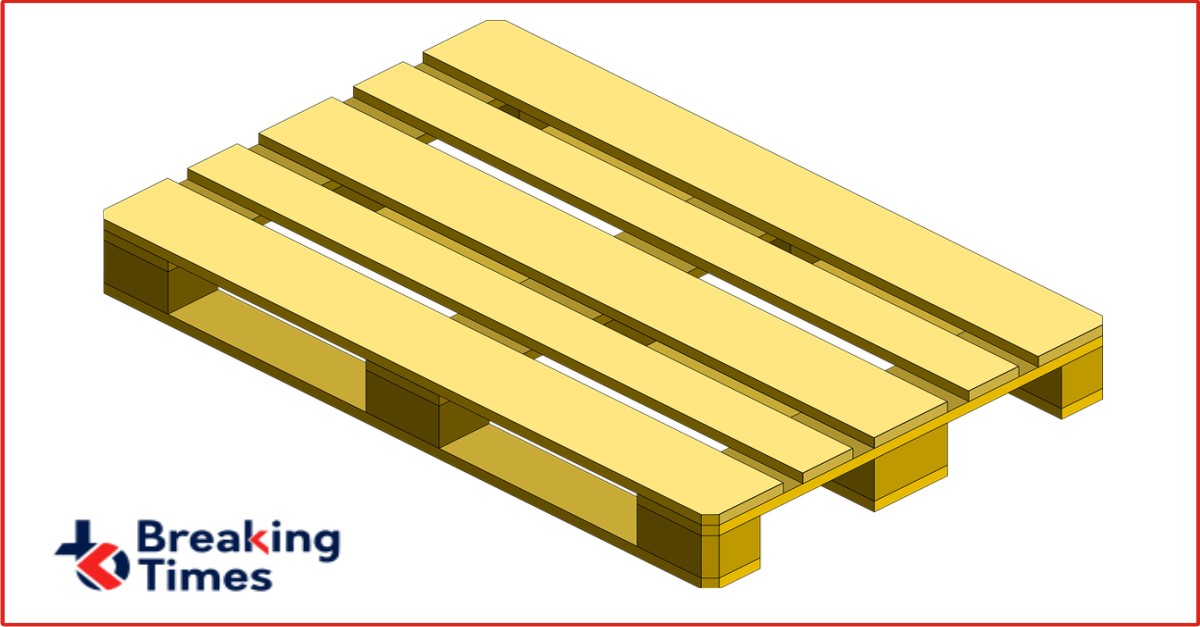Places to Find the Best Pallet
When it comes to disassembling pallets, it is important that you be extremely careful.

Are you on the search for the best free pallets that are free from chemicals, pesticides and other toxic chemicals? If so, then you have come to the right place as in this read, we are going to provide a list of ideal locations that can help you get a great supply of quality wooden pallets for your woodworking project.
- Feed & Tack Supply
Feed, tack, or the pet supply store is one of the best places to get free used pallets. Their pallets are usually designed from softwoods and carry animal supplies that aren’t toxic.
- Landscaping Companies
Here, you are likely to come across top-notch hardwood pallets that are primarily used to support the weight of shrubs, plants, and sod. However, you will want to steer clear of colored pallets that were used to carry fertilizers.
- Residential Construction Sites
Pallets in construction sites are usually used to carry felt paper, cement and joint compound, which are all non-toxic substances. However, you will want to ascertain the use with the residential builder or contractor. Also, avoid pallets from commercial construction sites as they may have carried toxic materials.
- Hardware & Lumber Stores
You will always come across a pallet lying around in a hardware or lumber yard. Again, you will want to be wary of the pallet you pick as some of them may have been chemically treated to avoid corrosion or even accidentally came into contact with chemicals when loading or transporting.
- Newspaper Delivery & Distribution Centers
In some cases, a quick chat with one of the office managers, loaders or drivers will be enough to see you take these heavy-duty hardwood pallets. Just ensure you get permission.
Pallet Prepping
When it comes to disassembling pallets, it is important that you be extremely careful, as the last thing you want is to break the hard-earned discount wood. Some methods are less desirable to disassemble a pallet into usable parts, and so, it is imperative to go over the basics.
- Hammer, Cat’s Paw & Pry Bar
A flat-clawed hammer, a pry bar or small cat’s paw, and a block of wood are all you need to disassemble a pallet without causing damage to the wood’s surface.
- Nail Punch
Utilizing a nail punch to drive instead of pulling the nails is a better method on the stubborn screw, ring, or spiral-shanked nails. If you have the budget, you can go for pneumatic nail punches as they work even better.
- Oscillating Tool
First, use a pry bar to loosen up tight planks. This will help expose the nail shank to the cutting blade of the oscillating tool and easily remove those rusty nails.
- Drill
If you are stuck with a nail that will not budget and the above methods have failed you, take a metal drill bit and drill to make quick work on those stubborn ancient nails.
- Clean Cut
If all the above-mentioned methods fail, consider cutting the pallet planks and leaving the nails and pallet ends still attached to the stringer. However, you will want to use this method as the last resort as it results in wastage.
Tips for Cutting, Shaping, Sanding & Finishing
Following the hard work of finding and disassembling the pallet, you still have to cut, shape, sand and finish the wood pieces before you can assemble them into something brand new. And the easiest way to embark on your pallet project is by cutting, shaping, sanding and finishing the materials before the assembly.
Since the materials from pellets tend to be unfinished, they can be quite rough- enough to cause splinters if you are not careful. However, it is this rough nature that attributes to their appeal. Sanding them down tends to take away the aesthetic patina of a wooden pallet’s natural state. If you are looking for a clean look of new wood, then avoid lengthy sanding and settle for a quick pass through a wood planer.
If you prefer the tarnished veneer of an ancient pallet, however, but still want it smooth to the touch, go for natural beeswax finishing products in order to highlight its well-worn look without the risk of sharp splinters.
When shaping and cutting, it is usually best to avoid making cuts near cracks, splits, or nail holes. Over time, wood on pallets shrinks and this makes it more prone to splitting or breaking during a cut.
This next point might sound trivial, but it is worth mentioning. Do not sand the pallet materials in an indoor setting and use a respirator to avoid breathing any dust. The debris and dust from a used pellet may contain toxic chemicals from spills, even if it was not used to ship poisonous substances. When it comes to sanding the rough edges, use a hand planer to avoid creating possibly toxic dust.
A pallet project may range from making an outdoor garden bed or an Adirondack chair. There are unlimited ways to upcycle a pallet, whether you are looking for a piece of furniture or an art statement. It is also a great way to make use of wood that would have otherwise been discarded. With all this useful information, you should be properly armed to embark on your project.

